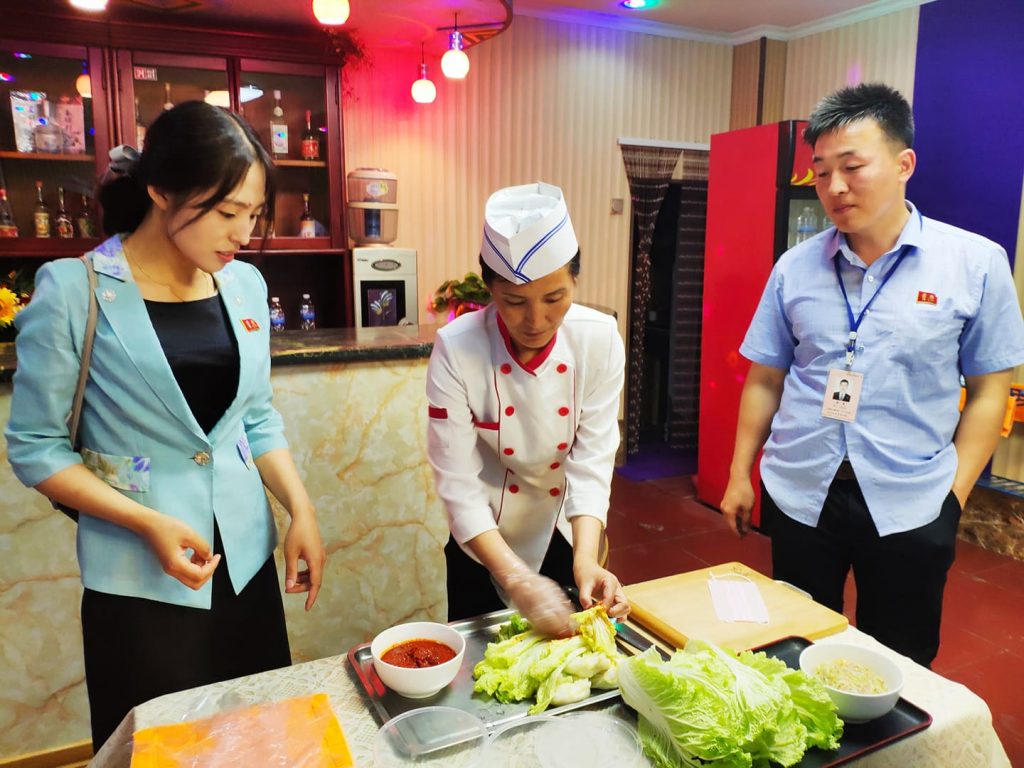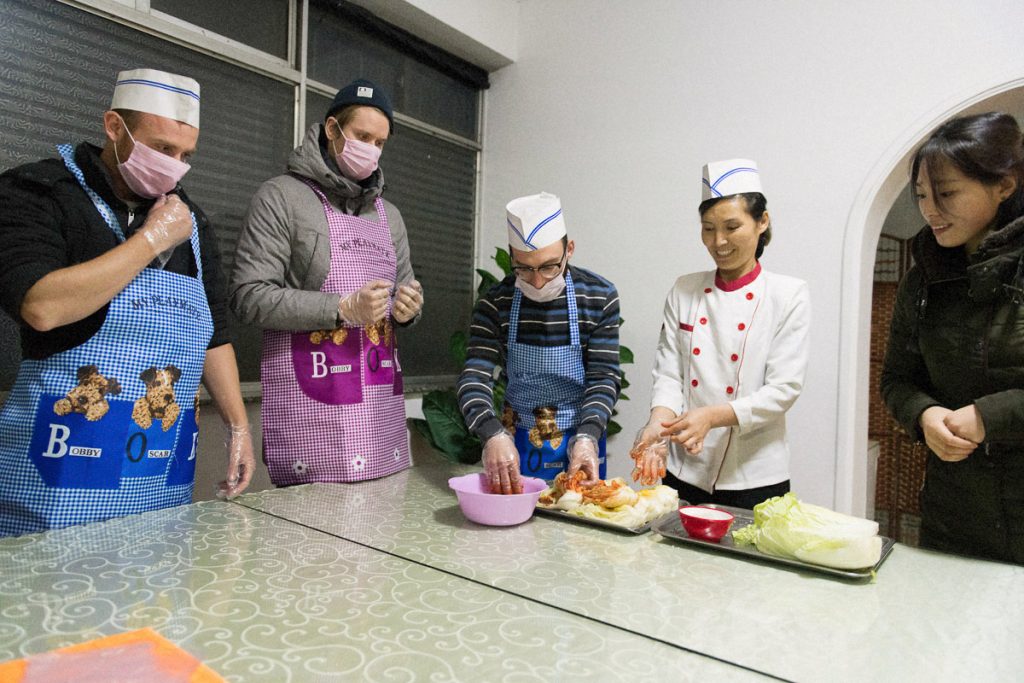What is the difference between North Korean kimchi and South Korean kimchi? North and South Korea might be separated by the most heavily militarised border in the world – ironically called the DMZ – and they might be ideologically opposed, but there are a few things that unite them. Such things include the story of Arirang, the deceptively powerful rice wine soju, and of course the eternally beloved Korean delicacy of kimchi. We found out what is the difference between South and North Korean kimchi
With many of the YPT staff having travelled several times to both North and South Korea we often find ourselves sitting down to a meal with kimchi as a compulsory staple. As with most things on the peninsula, there are subtle differences. The language is relatively the same but has some small differences (similar to British vs. American English), Soju is prominent (though again with slight differences) and so naturally kimchi while very similar has some subtle differences.
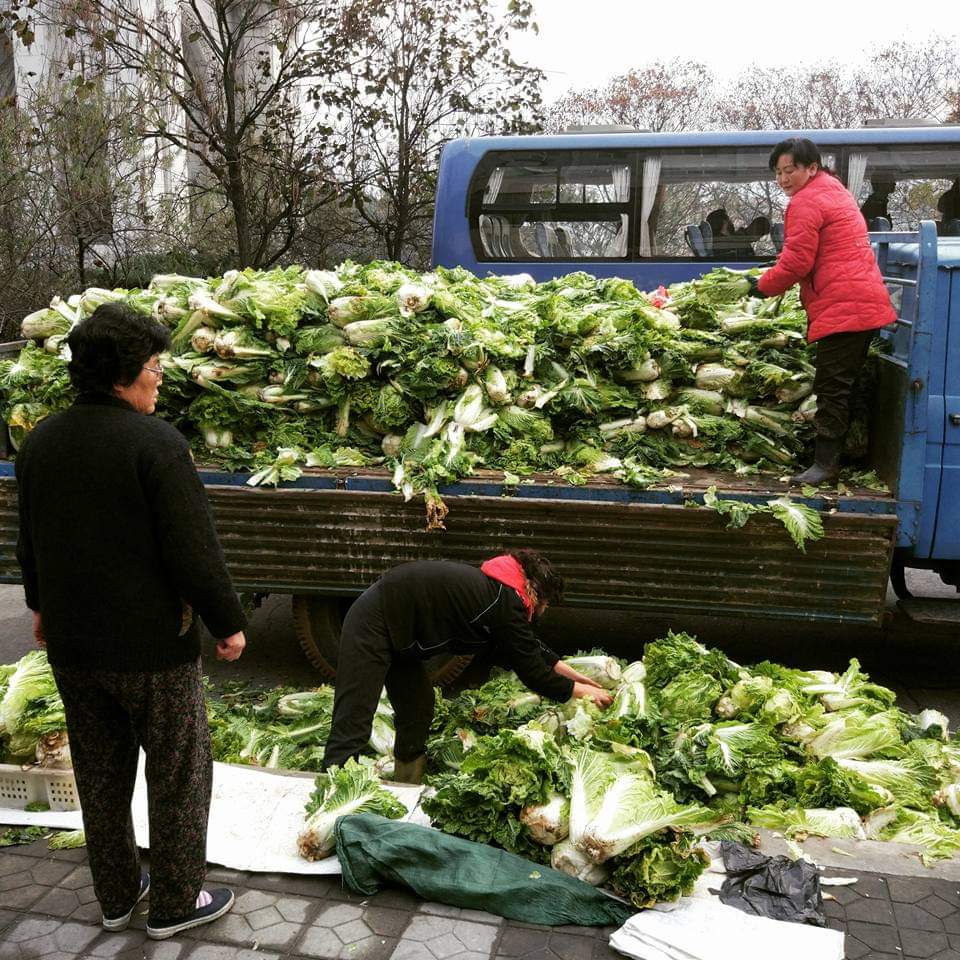
What is Kimchi?
Kimchi is collective term for vegetables (mostly cabbage) that have been seasoned, salted and fermented using a wide selection of seasonings such as chilli, garlic, spring onions or ginger and served as a side dish to almost every Korean meal. It may also include fish.
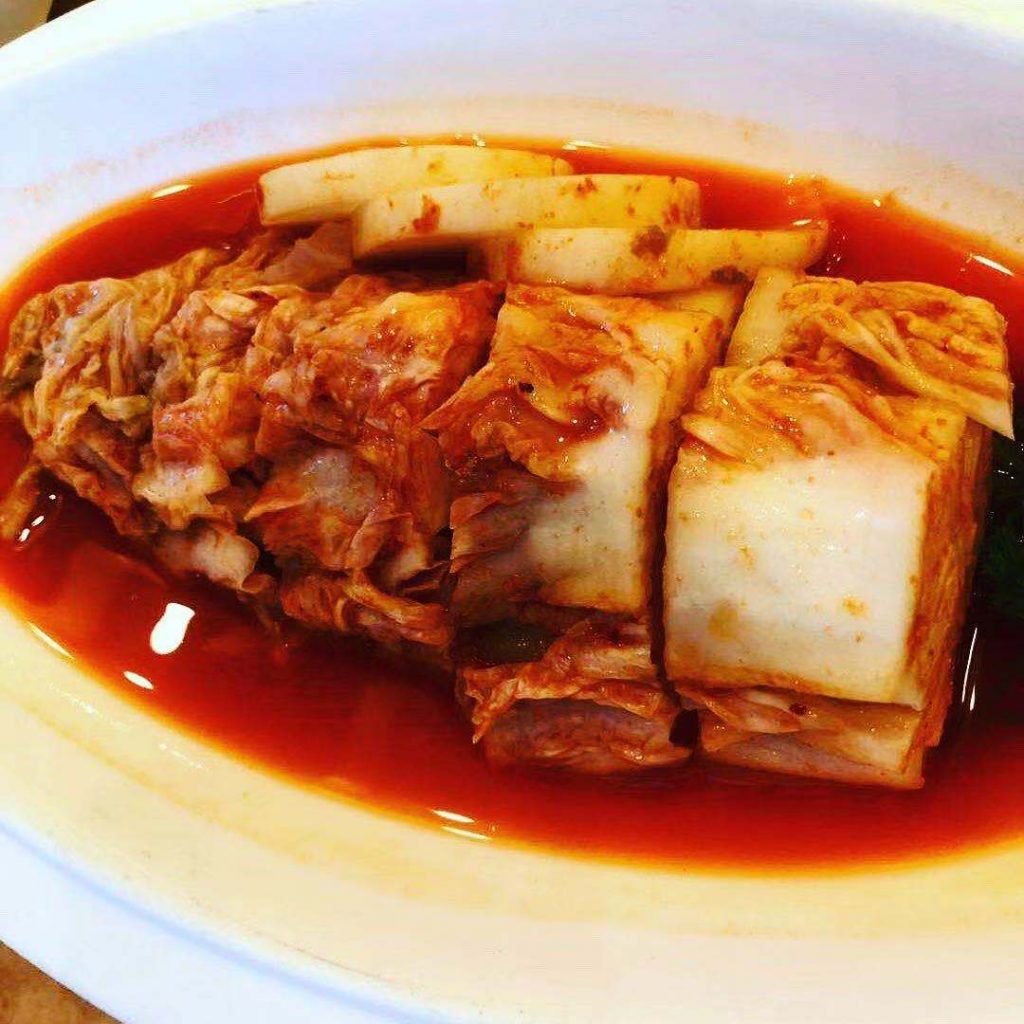
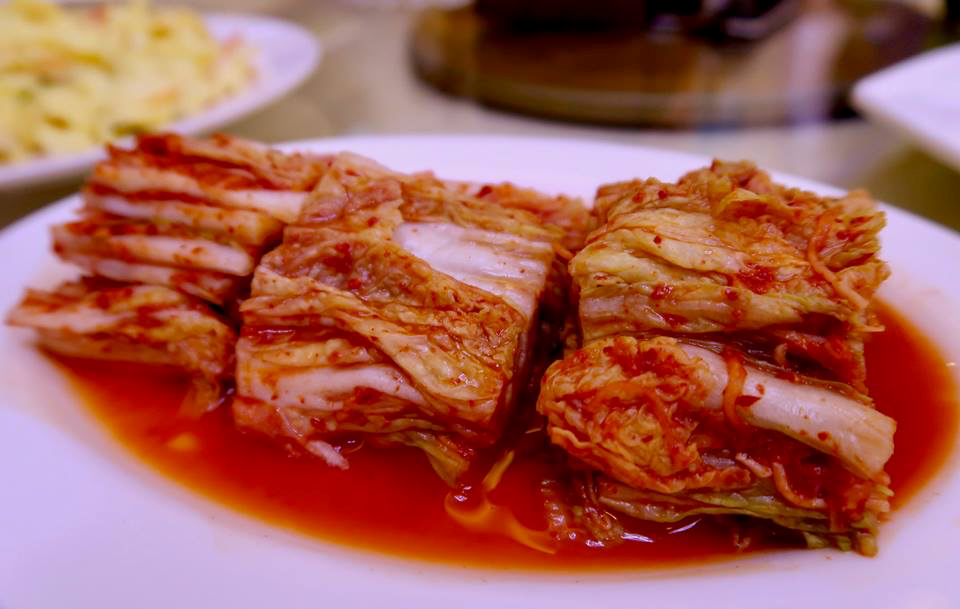
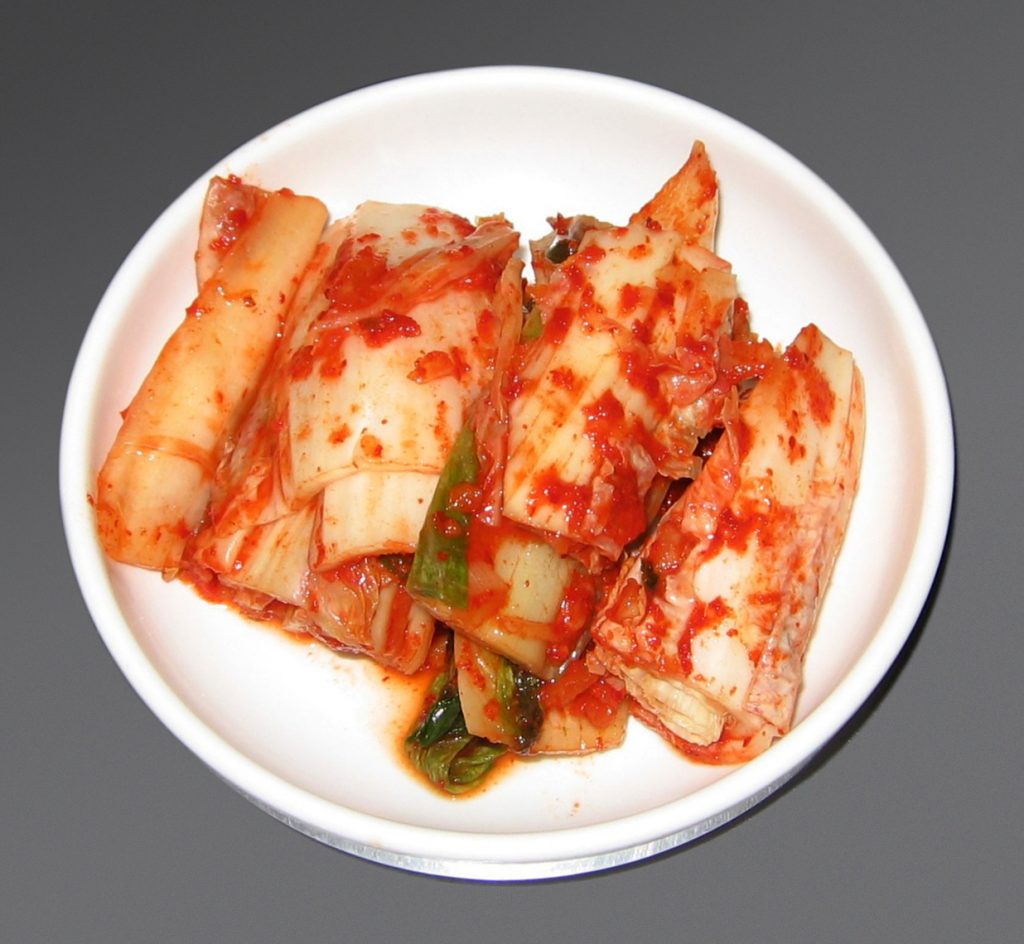
Kimchi colour
Kimchi in the south tends to have a more reddish colour than the north. North Korean kimchi tends to be a lighter shade due to the number of chillies added. Unless you are an avid kimchi consumer however, you will sometimes not be able to tell. It is common for kimchi to be homemade, which means everyone has their own way of preparing it!
Kimchi taste
The lighter colour of kimchi found in North Korea often means it is less spicy than kimchi in South Korea. However, the lessened spice and lighter colour can also mean it has a little more of a sour taste. If the kimchi is dark red it can tend to be more spicy or sweet. This is a generalised statement of course and comes from our own experience in the country.

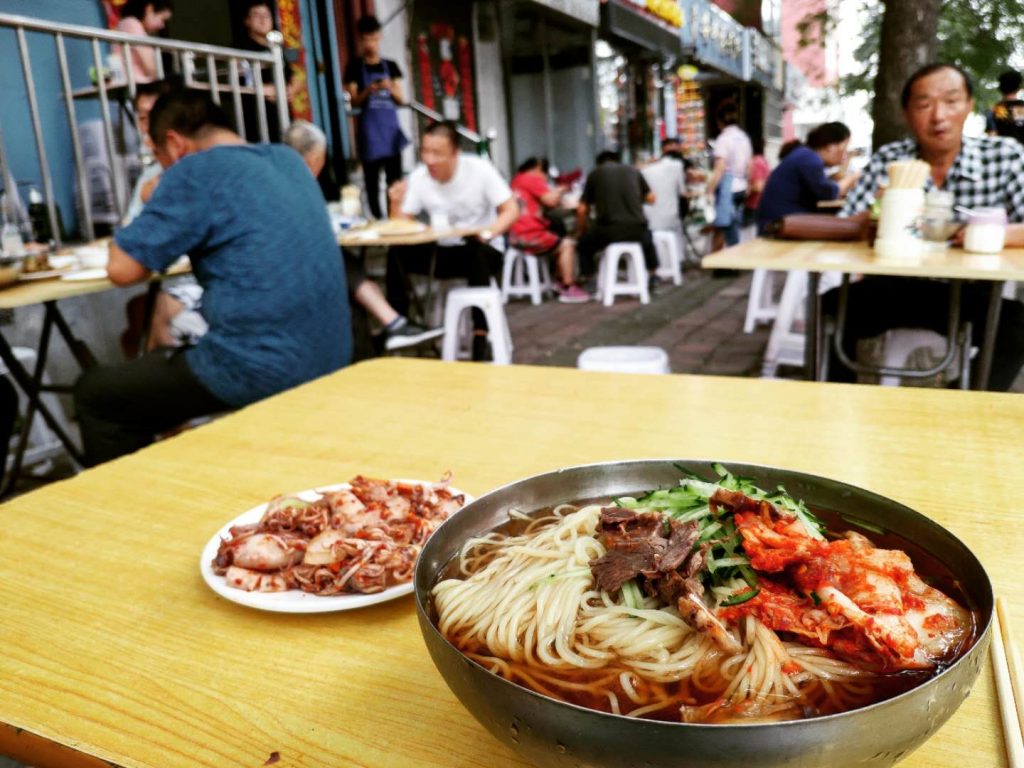
Which is better? North Korean kimchi or South Korean kimchi?
The answer is both! A cop-out, we know, however kimchi is like most things, it’s based on personal preferences. It’s like asking is wine better in France or Italy? Everyone has their own opinion and this question will never be answered (despite what your French or Italian mates might say).
Kimchi Ingredients for the best North Korean kimchi recipe
- 500g Korean cabbage
- 2 litres of water
- 1/4 cup salt
- 1 tsp shrimp paste
- 120g daikon radish
- 2 spring onion
- 1/6 cup Korean red pepper powder
- 1/8 cup Korean fish sauce
- 1/8 cup minced (real) ginger
- 1 tsp minced garlic
- 1 tsp coconut sugar
- 1 tsp smoked paprika
How to make North Korean kimchi – North Korean kimchi recipe
- Cut the cabbage in half, then quarters, then keep going until you have little pieces discarding the outer parts;
- Soak the cabbage in salty water and cover for around 24 hours. Regularly change the saltwater and keep at room temperature;
- Drain the cabbage in a colander and rinse with cold water;
- Grab the rest of your ingredients and start staring it like a man (or woman; women can cook too) possessed;
- Pack the mixture tightly into a clean 500ml glass jar with a tight-fitting lid and seal it;
- Put it in a cool dark place and let it ferment for the next 24 hours;
- Open the jar and place the kimchi into a large bowl;
- Sprinkle with salt and toss with your hands until the cabbage is coated. Add enough cold water to keep the cabbage slightly submerged. leave for up to 24 hours;
- Gently squeeze out the excess liquid and transfer to a sealable jar;
- Seal the jar and periodically let the gas escape. You need to wait at least 48 hours before eating the kimchi, although the best results will take at least a week. Or you could go full Korean and bury it for a month!
